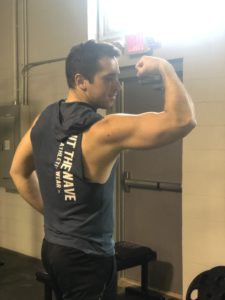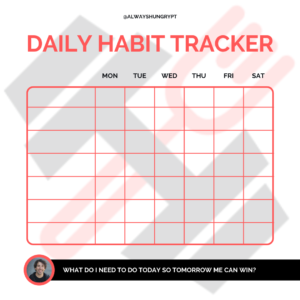Spring is my favorite time of year. Winter is finally over and the snow and terribly low temps that sweep the Midwest are gone, and with warmer weather comes the time to exercise outdoors again! Not only is Vitamin D severely lacking in most Americans, but physical activity outside is invigorating! The warm sun; the cool breeze; the feeling of pushing yourself in whatever you’re doing is second to none. One of the most popular things you’ll see people doing this time of year is hitting the pavement to log some miles walk, jog, running.
Though Running is widely criticized for it’s impact on the ankles, knees, hips and it’s over used as a way to lose fat when there are much better ways, it’s still a popular go-to exercise for those looking to get their lungs burning and heart pumping in the beautiful spring weather (myself included).
It’s still a relatively new hobby/exercise for me to partake in seeing as the first 25 years of my life, I could hardly run ¼ mile without feeling like everything internally was going to explode, but over the last 5-7 years as I’ve made it a part of my spring, summer, fall training, I’ve picked up a few key tips for making the best of my workouts.
These are my Top 3 tips for running in warmer/hot weather
- Un-Dress Appropriately
One of the downsides of training outdoors in the spring – especially here in the Midwest – is that it can be 40 degrees in the morning and quickly jump to 70… it’s hard to tell where the weather is going to settle. Which makes it tough to know what to wear. Do you bundle up with a hoodie/light jacket and pants; or risk it with a t-shirt and shorts? Either way, you’re screwed.
But you don’t have to be!
A rule of thumb I learned while training for my first 5K (which took place in January!) was to dress as if the weather is 20 degrees warmer than the thermometer states. It had me curious so I looked into it more and found that the reason for this estimation is that when your body starts moving, the movement creates energy. Energy naturally warms up our body temperature, and if you’re starting out in cool weather with too many layers, your warmer body temps might climb too high.
It may be a little uncomfortable with a chilly start, but once you get your feet moving and the heart starts pumping blood around, you will naturally feel your body temperature rising. Keep it regulated and avoid it getting too high by dressing like it’s 20 degrees warmer than it says when you head out for your next jog.
Keep in mind the intensity of the workout. If you’re going for “all out sprints” or a lengthy trot around the neighborhood, your body temp will rise and sustain much higher/longer than if you’re just doing a mild-brisk walk around the block.
- Slow Your Pace
If you’re like me and want to get the run over as quickly as possible, one thing I have to remind myself is that I need to S-L-O-W my pace down in the beginning. It’s too easy to want to bolt down the road, especially if you’ve been training through winter and early spring when it’s still chilly out. The colder weather typically makes for better runs because – as discussed in the clothing section – our body temperatures rise and when it’s cold out and our internal temps rise to a comfortable level, we don’t get overheated and burned out.
Slowing your pace – especially at the start – can help you maintain for longer exercise durations and keep you feeling better upon finishing. It will help avoid overheating; dehydration; and burn out.
The nice thing is, like when you get used to colder temperatures, your body will re-acclimate to the warmer climate and you’ll be able to withstand running at your normal pace again in no time. For regular runners, it should only take a week or two for Stella to get her groove back.
- Hydrate
Always important – don’t forget to hydrate. 2-4 glasses of water about 15-30 mins before your run can help you avoid dehydration as well as regulate your body temperature. This will help keep you in the game longer and aid in quicker/better recovery afterward. Don’t slosh down too much or you might have a full belly or have to use the restroom way too often. Handsfree water bottle belts and vests are a great investment that minimally adds weight but helps keep you going even on the hottest of days.
They sound simple enough but forget one of these tips and you might be in for a rough day after a warm weather run. As you can see, regardless of what you do – the overarching concept is to keep your body temperature regulated. It will naturally rise as you expend energy through movement – going beyond running, this could be cycling, sports, swimming, any other outdoor strenuous activity – so keeping these tips in mind will help you mitigate the pitfalls of overheating – heat stroke, heat exhaustion, dehydration, etc. – that go along with outdoor running in warmer temperatures.
What’s your favorite outdoor activity and how do you prep to beat the heat?


